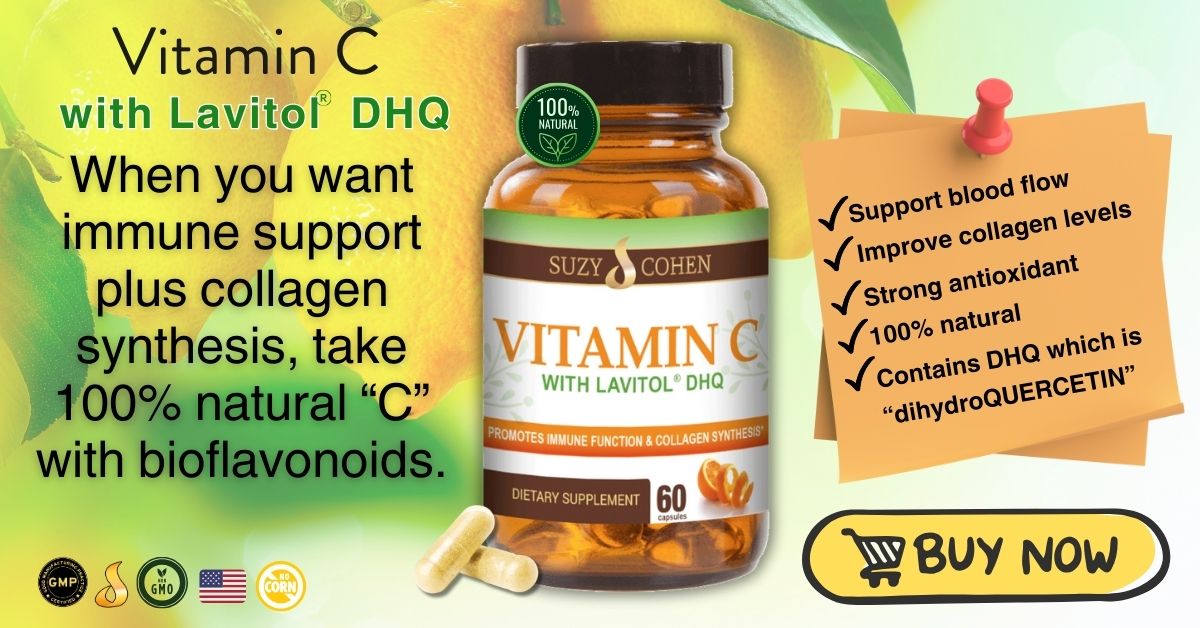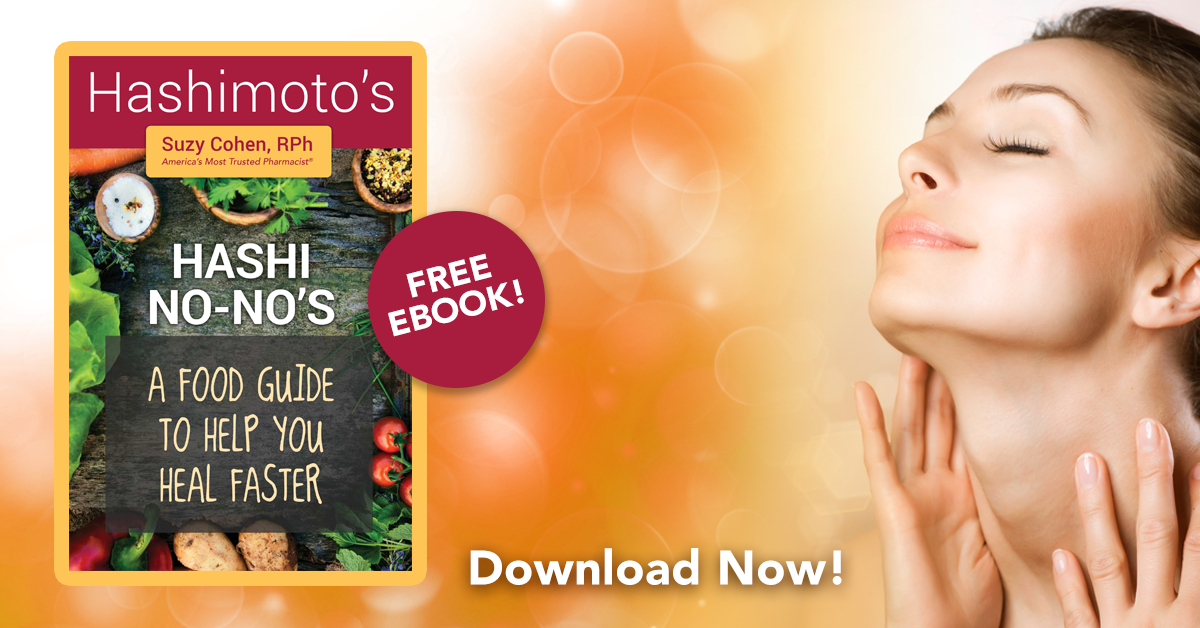Sometimes a word annoys me, such as flavonoid and all the related words like it including bioflavonoid, bioflavones, flavonol, polyphenol, phytonutrient, anthocyanidins… and oh my gosh, you can see how confusing it is to remember all those names, especially when they all basically mean the same thing: Antioxidant from a plant!
The antioxidant is often yellow in color, and it naturally occurs in delicious fruits and vegetables that you eat. One amazing antioxidant, or flavonoid, or whatever you’d like to call it is kaempferol. This is pronounced “camp-fur-all.”
This is what you’re eating when you bite into raspberries, apples, grapes or tomatoes. It’s also found in spinach, potatoes, onions, kale, endive, lettuce, broccoli, Brussels sprouts, cucumbers, lettuce, green beans, peaches, blackberries, cranberries and green tea. One food with a lot of kaempferol is capers! Sprinkle those on your salad or CLICK HERE to get my recipe for Skillet Kaempferol Chicken with Caper Butter Sauce.
Kaempferol was discovered by a Hungarian chemist named Albert Szent-Gyorgyiin 1938. He thought it was a vitamin at first and named it “Vitamin P.”
By now, you’re wondering why I’m talking about kaempferol. I’m tired of everyone talking about carbs, proteins and fats.
None of us want to count calories. We don’t want to evaluate ratios of carbs, proteins and fats either! It’s much easier to just eat food that is bright and colorful and full of life-giving nutrients such as kaempferol.
My vote is to stop counting carbs, just eat kaempferol!
As a traditionally trained pharmacist who is passionate about natural remedies, I can’t help but be impressed with the studies on kaempferol. You can eat a salad or a berry-based smoothie and know you’re getting a ton of it!
This is a very promising and innocuous strategy to help with many disorders you’re suffering with:
Colon Cancer.
My older brother passed away from this in 2017. I still miss his funny jokes, he used to text me them. To be perfectly honest, I don’t know if he even had a chance, because his physician discovered it way too late and he was gone in less than 2 months. You can read my article about my brother Danny by CLICKING HERE, it’s entitled My Brother was a Secret.
I wish I knew about kaempferol back then. I wish a lot of things. Anyway, there was a STUDY in 2014 that proved some benefits from kaempferol in human colon cancer cells (this was not an animal study). Kaempferol is a potent antioxidant that support gastrointestinal health and suppresses inflammatory chemicals in the gut. Which leads to my next thought about food poisoning.
Food poisoning.
I researched this and sure enough there is scientific literature about the benefits of kaempferol when it comes to food poisoning. About 50 million people worldwide get infected with a parasite called Entamoeba histolytica which can cause a serious gastrointestinal infection. Transmission is pretty easy and occurs by eating or drinking food or beverages that have become contaminated with the organism, E. histolytica, which by the way comes from feces. It is a fecal-oral route. It could happen if your sandwich maker fails to wash his/her hands properly after using the bathroom. Luckily, most food chains require their sandwich assembly employees to wear gloves.
Food borne illness is actually a very common disease in many emerging countries where the water hasn’t been fully purified, or in countries damaged by floods and tsunamis. It’s more common than you think. Kaempferol (and quercetin) was shown to deactivate this organism, which if left untreated can cause neurological dysfunction. We live in an age of antibiotic resistance and metronidazole may not always work. Speaking of antibiotics, I wrote an article entitled, Natural Alternatives to Antibiotics and you can read that by CLICKING HERE.
Heart disease.
Women (and probably men) who have high intakes of kaempferol might be less likely to die of a heart attack. It works in part by preventing the oxidation, as in “rusting” of low-density lipoproteins. Rusting is a problem int he human body, generally speaking. It is essentially due to free radicals which can attack the body and cause all kinds of diseases. Vitamin E is a popular anti-rusting type of supplement. There is also some interesting research on Vitamin E’s impact on heart disease. If this interests you, take a 5 minute tangent and CLICK HERE to read my article, The Truth About Natural Vitamin E as Opposed to Other Kinds.
Many studies have examined the association between flavonol (antioxidant) consumption and risk of fatal heart attacks. In a Finnish study, it was shown that after almost 3 decades (28 years!) quercetin significantly (and kaempferol borderline) were linked to reduced risk of death from heart disease. Then there was another study (Lin et al who in THIS study, examined intakes of the various antioxidants and concluded that ONLY kaempferol was significantly associated with reduced coronary heart disease (mortality) after 12 years follow-up. That’s not too shabby!
HIV infection.
Is it a stretch? Kaempferol has been shown to slow down the enzymes that spread HIV. There will one day be medications derived from kaempferol and used pharmaceutically.
Disarms Peroxynitrite.
When concentrated, this is a bad buy. You might be getting too much of it if you take arginine supplements, or if you eat ‘muscle’ meats that have been injected with it… it maintains a pretty color in food. Too much peroxynitrite is linked to asthma, autism, arthritis and Alzheimers and many other diseases. Kaempferol is so strong an antioxidant, that it can specifically disarm peroxynitrate. That is a good goal to have, to disarm peroxynitrite which is formed in a biochemical reaction in your body from the combination of “nitrite” with “hydrogen peroxide.”
Guess what else can disarm peroxynitrite?
CATALASE! This is an endogenous (internally made) antioxidant that is highly concentrated in your red blood cells and your liver. It’s one of the strongest antioxidants you make, and similar in some ways to glutathione. Most of you know that Catalase neutralizes systemic hydrogen peroxide.* You make this ‘rusting’ compound intracellularly, all day long as part of your metabolism. If elevated, hydrogen peroxide can become toxic. It’s linked to Hashimoto’s Thyroiditis. If you’re interested in this connection, CLICK HERE to read my Question and Answer article that sheds light on the connection between thyroid, catalase, hashimoto’s and hydrogen peroxide.
If you have this condition and would like a food guide to help you out, please get a copy of my FREE ebook by clicking on the image below:
Most people don’t realize that their catalase enzyme ALSO breaks down peroxynitrate/nitrite. You can read about how powerful catalase is at neutralizing peroxynitrate in THIS article entitled, Catalytic Scavenging of Peroxynitrite by Catalase.
Breast Cancer.
Breast cancer spreads with the assistance of some compounds in your own body called Matrix metalloproteinases, which we call MMPs for short. Kaempferol slows down cancer cell invasion into other cells (metastasis) by blocking MMPs, specifically MMP-9 expression. So eating foods rich in kaempferol would be a natural consideration for breast health. Here’s a STUDY on pubmed to read if you’re interested.
Prostate Cancer.
In Biomedical Reports 2015, we saw that kaempferol (specifically kaempferol-3-O-rhamnoside) could block prostate cell growth to some degree. It can’t hurt to increase brightly colored fruits and vegetables rich in kaempferol. Kaempferol has many chemopreventative characteristics, both in vivo and in vitro, and can impact cell-signaling pathways that slow down cancer proliferation. It’s a great free-radical scavenger at any point of treatment.
Alzheimer’s disease.
Granted it’s a fruit fly study, but it still shows promise. The flies ate a diet rich in kaempferol for a month, and then they were evaluated for their ability to climb. You can guess the ones who consumed the diet highest in kaempferol had the best climbing ability, memory (however they figured that out!), and acetylcholine levels. In a prospective study published in Neurology, January 2018, researchers concluded, “Consumption of approximately 1 serving per day of green leafy vegetables and foods rich in phylloquinone, lutein, nitrate, folate, α-tocopherol, and kaempferol may help to slow cognitive decline with aging.”
How You Can increase Kaempferol in Your Diet
It’s easy as eating colorful fruits and vegetables.
So eat more red, yellow, blue and green!
Add living plant foods in these colors to your diet and you’ll be increasing kaempferol. For example, a green salad with tomatoes and capers on top. You could make a fruit salad too. Capers have the very highest content of kaempferol, so CLICK HERE to get my recipe on Skillet Kaempferol Chicken with Caper Butter Sauce.
CLICK HERE for my recipe to make a Kaempferol Smoothie
CLICK LIKE to FOLLOW Suzy Cohen – Get Important Health Tips

Suzy Cohen, has been a licensed pharmacist for over 30 years and believes the best approach to chronic illness is a combination of natural medicine and conventional. She founded her own dietary supplement company specializing in custom-formulas, some of which have patents. With a special focus on functional medicine, thyroid health and drug nutrient depletion, Suzy is the author of several related books including Thyroid Healthy, Drug Muggers, Diabetes Without Drugs, and a nationally syndicated column.


